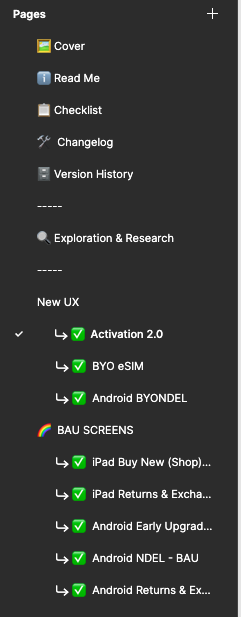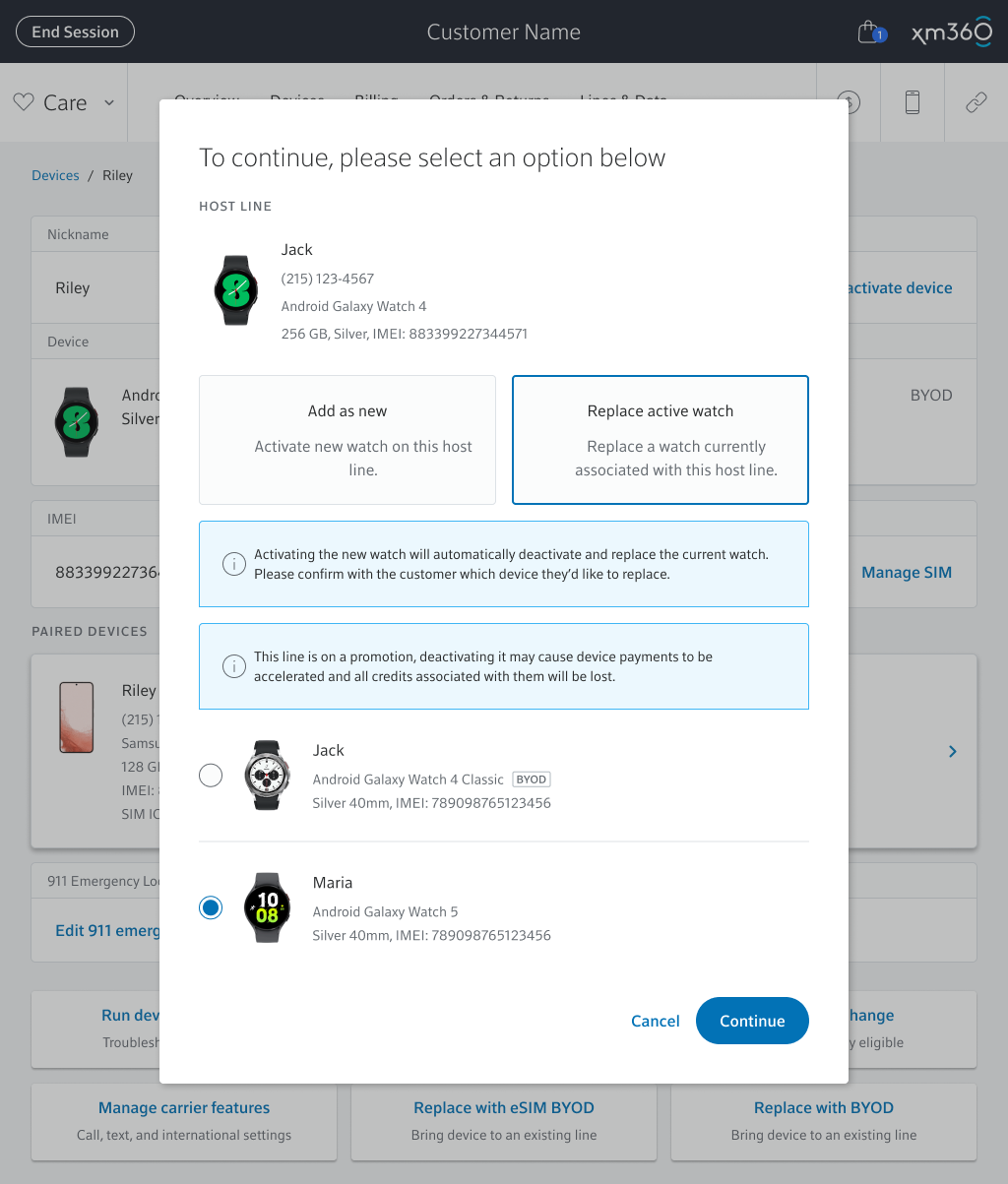XM360 eSIM support launch
End to end experience for eSIM devices
The Problem
Xfinity Mobile needed to address the lack of service support tools for our consumer facing agents and planned to integrate tools and features into their main application for optimizing customer experience. The primary goal of this project was to create a comprehensive end-to-end experience that empowers agents to troubleshoot devices equipped with eSIM technology. We needed to integrate the cellular service transferring, SIM switching tool from another product and add the ability to troubleshoot servicing for eSIM device capabilities and billing assistance. The most significant hurdle we faced was when devices featured dual SIM slots, incorporating both physical nanoSIM and eSIM components."
The Solution
In order to overcome these challenges, the UX team collaborated closely with the RSSx (Retail Switching Service Experience) team, solution designers and backend developers to overhaul the user experience, aiming for a more seamless process for our agents. We integrated the Retail Switching Service Experience system used by agents for troubleshooting and manage SIM type switching into the Xfinity Mobile system, enabling a more integrated and efficient workflow.
We recognized the need to streamline documentation, consolidating it to prevent errors stemming from repeated screens in various flows in a source of truth. By doing so we would hand off a template format that the developers can use to apply to any scenarios that may arise later in the process of development.
The Process
As the project evolved and requirements continued to grow, it became evident that the team needed to address increasingly complex issues. To effectively manage these challenges, we adopted a 'divide and conquer' approach, breaking down the tasks into smaller, more manageable components. This allowed us to allocate resources efficiently and ensure that each aspect of the project received the attention it required.
Regular daily working sessions were conducted with key stakeholders, including the product owner, solution designer, and representatives from both backend and frontend development leadership. These sessions served to foster transparency and provide immediate answers to any questions or concerns across the team, enhancing collaboration and keeping the project on track.
In addition, we established frequent open office hours for designers, providing a collaborative platform where team members could share and discuss their progress on various aspects of the Xfinity Mobile project. This open communication allowed us to gain insight into how design solutions in different areas of the project could impact each other, enabling us to align our efforts for a more cohesive user experience.
Throughout the project, as each flow was completed, our UX team meticulously documented its readiness for development review and secured product-approved sign-offs. This ensured a clear and efficient transition from design to development, streamlining the overall project workflow."







